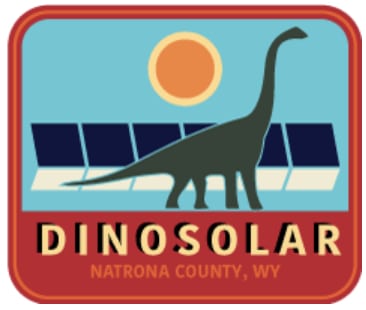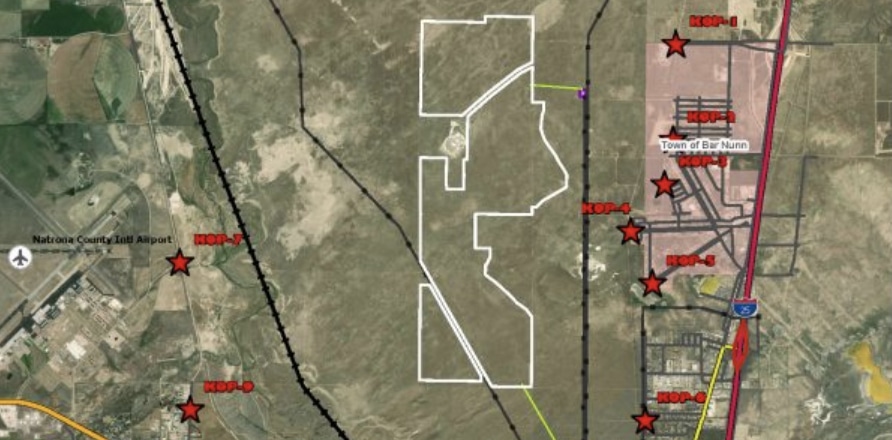The 240 MW Dinosolar project northwest of Casper, Wyoming received a permit last week from the Natrona County Planning Commission, and still requires further approvals, as reported by The Casper Star-Tribune.
Project developer Enyo Renewable Energy said the completed project would yield $2.04 million in property taxes in the first year of full operation, and $46.7 million over the project’s 35-year lifespan.
Rocky Mountain Power, a multi-state subsidiary of PacifiCorp that provides 55% of Wyoming’s retail electricity, has developed a resource plan that projects 1,821 MW of new solar capacity by the end of 2023, along with early closure of Wyoming coal-burning units starting in 2023.
Wyoming has just 109 MW of solar capacity, while it has been the nation’s largest producer of coal since 1986, says the U.S. Energy Information Administration.
Wyoming regulators last November opened an investigation into Rocky Mountain Power’s resource plan, focusing on planned coal plant retirements, as reported by Cooper McKim with Wyoming Public Media. The Wyoming Public Service Commission’s order states that closing coal plants “prior to the end of their established depreciable lives may adversely impact the cost and reliability of service … while producing significant negative economic impacts.”
Solar industry perspective
“Wyoming has always been a place where people have made a living from vast natural resources,” said Richard Mack, treasurer of the Wyoming Solar Energy Association, when asked what is needed to advance solar power in Wyoming. “Markets change and this has resulted in many boom and bust cycles across the board, not just in the energy sector,” he added. “Some changes take time, especially when we are speaking of changing conceptions and attitudes.”
As for small-scale solar—the business of most of the association’s members—Mack said that “Wyoming does have a net metering policy that, in my opinion, is fair although capped at 25 kW. Obviously this is sufficient for the vast majority of residential and most commercial customers throughout our state. Efforts have been made in the past to increase this limit but were met with strong opposition.” Any credit left at the end of the calendar year by a net metering customer “is purchased at the utility company’s avoided cost, which is about 25% of retail cost,” he said.
One of the association’s primary goals “will be to promote public education and understanding to help develop a spirit of cooperation across industries, parties, and departments,” he said. “We are glad to see our utility companies and state offices, including the Wyoming Department of Fire Protection and Electrical Safety, making efforts to streamline system approvals and permitting.”
Tourism

As for the Dinosolar project, the project’s website looks ahead to successful project completion, showing “key observation points”—the red stars in the image above. That map of observation points, together with the project’s logo, at right, suggests the potential for the solar project to become a tourist attraction.
This content is protected by copyright and may not be reused. If you want to cooperate with us and would like to reuse some of our content, please contact: editors@pv-magazine.com.








“Wyoming regulators last November opened an investigation into Rocky Mountain Power’s resource plan, focusing on planned coal plant retirements, as reported by Cooper McKim with Wyoming Public Media. The Wyoming Public Service Commission’s order states that closing coal plants “prior to the end of their established depreciable lives may adversely impact the cost and reliability of service … while producing significant negative economic impacts.”
First off, I imagine RMP is allowed to file rate cases for “stranded costs” just like a lot of ‘other’ electric utilities are allowed rate cases for decommissioning old fueled generation resources.
“As for small-scale solar—the business of most of the association’s members—Mack said that “Wyoming does have a net metering policy that, in my opinion, is fair although capped at 25 kW. Obviously this is sufficient for the vast majority of residential and most commercial customers throughout our state. Efforts have been made in the past to increase this limit but were met with strong opposition.” Any credit left at the end of the calendar year by a net metering customer “is purchased at the utility company’s avoided cost, which is about 25% of retail cost,” he said.”
This is not what RMP, Berkshire Hathaway and Warren Buffet have pundited through RMP in other areas of its service. RMP has gone on record that excess solar PV pushed back onto the grid from individual customers should be “priced” at 1.5 cents to 2 cents/kWh, then sell back to these same entities at 10 cents to 12 cents/kWh after solar PV peak generation times of the day and at night. All avoided costs by RMP and NO right cost analysis of individual solar PV installations that provide distributed peak solar PV production to RMP that has worth above and beyond low wholesale electricity prices. A generated power resource that’s at the right voltage as residential ratepayers use, no transformer step losses, direct local generation taking some of the load off of remote centralized generation resources and not having to “ship” the distributed generation resource back to the grid, but right next door or down the street to the neighbors. By utility “standards” when “they” do this it has worth, it should also have worth on the actual costs of residential generated power sent back onto the grid during the day. That lousy 1.5 to 2cents/kWh should be somewhere around at (least) 6 to 8cents/kWh excess to the grid. While RMP (wants) to be fair in pricing, yeah right, they should also remove their fuel charges and TD&D charges to (non solar ratepayers) for every kWh of local distributed solar power they use that is excess pushed back on the grid, during solar peak generation times of the day, in particular from about 10 AM to 2 PM each day.
With technology pushing the efficiency levels, up and manufacturing and robotics pushing the price point down per unit, sooner or later for the most part, as solar PV with energy storage becomes more popular, folks won’t need the utility for anything but back up and high surge power for starting pumps and heating elements.
I would like to know about career opportunities at this project, building it & maintaining it.